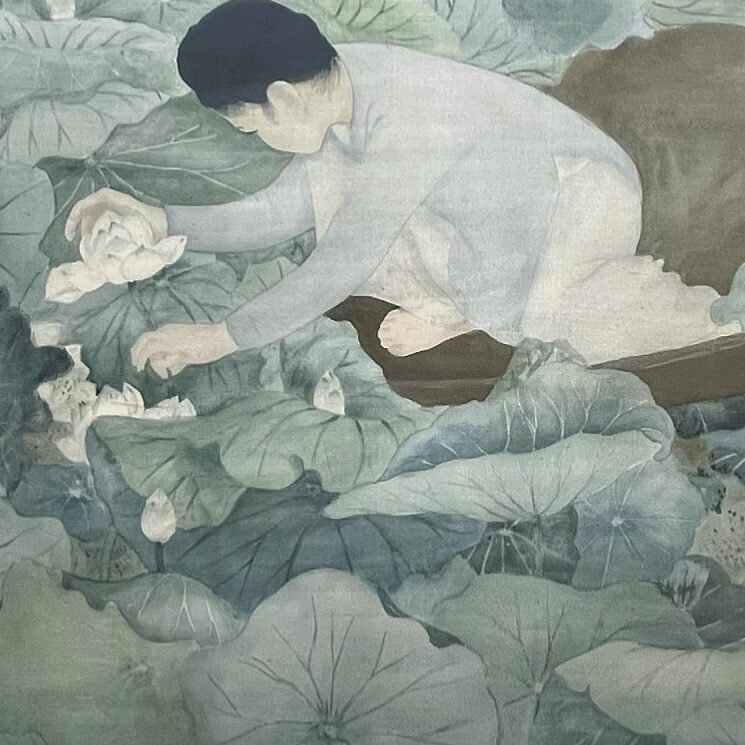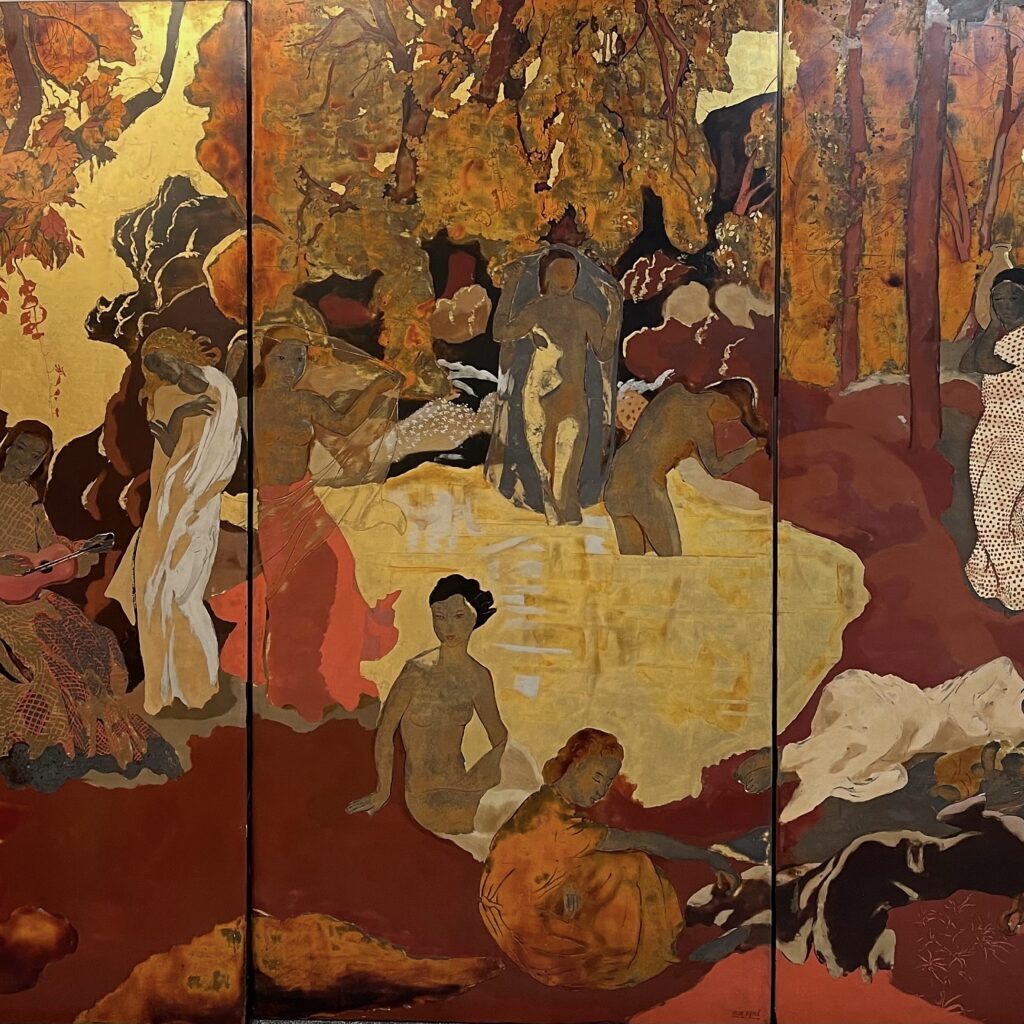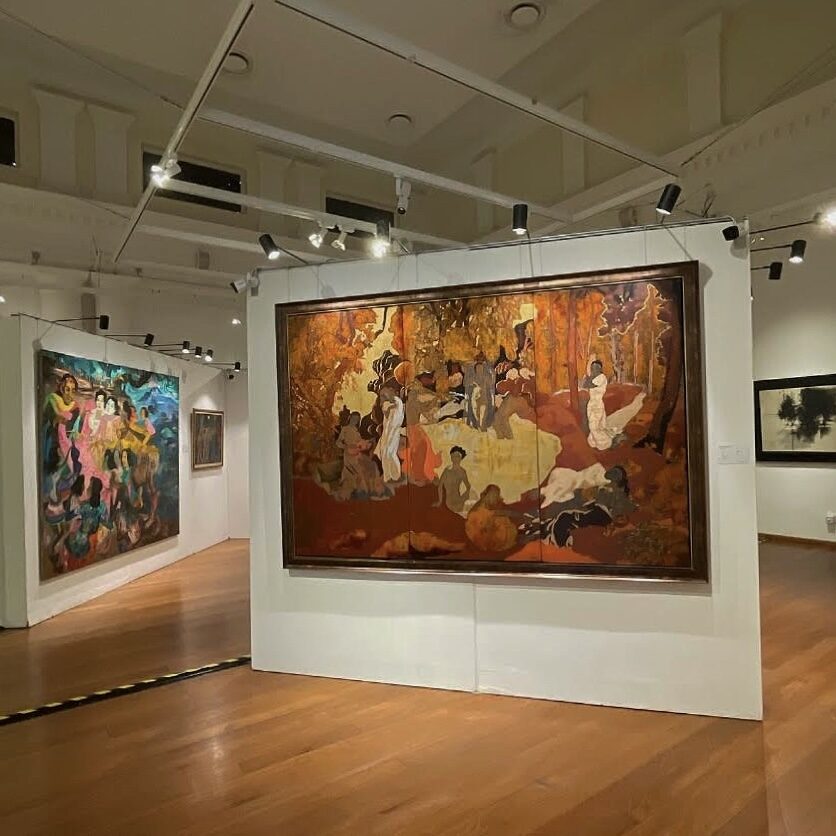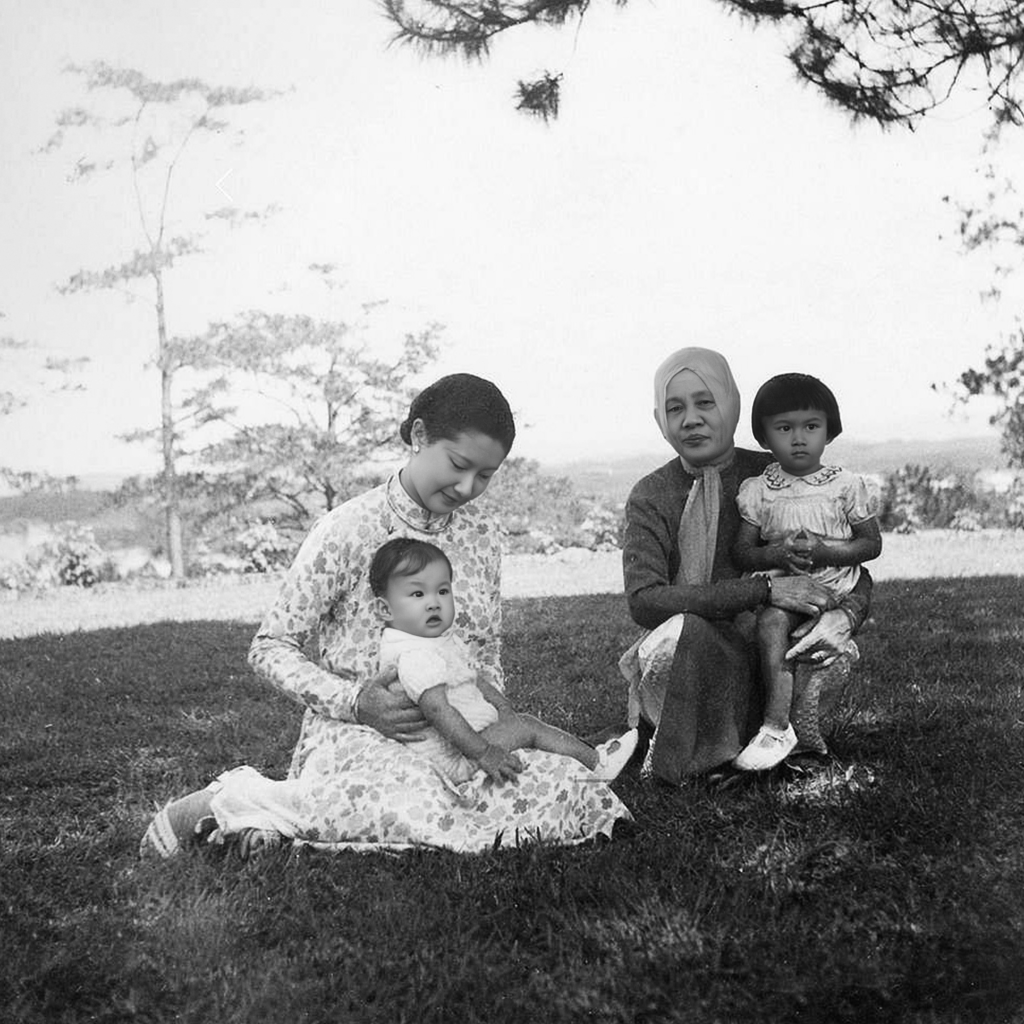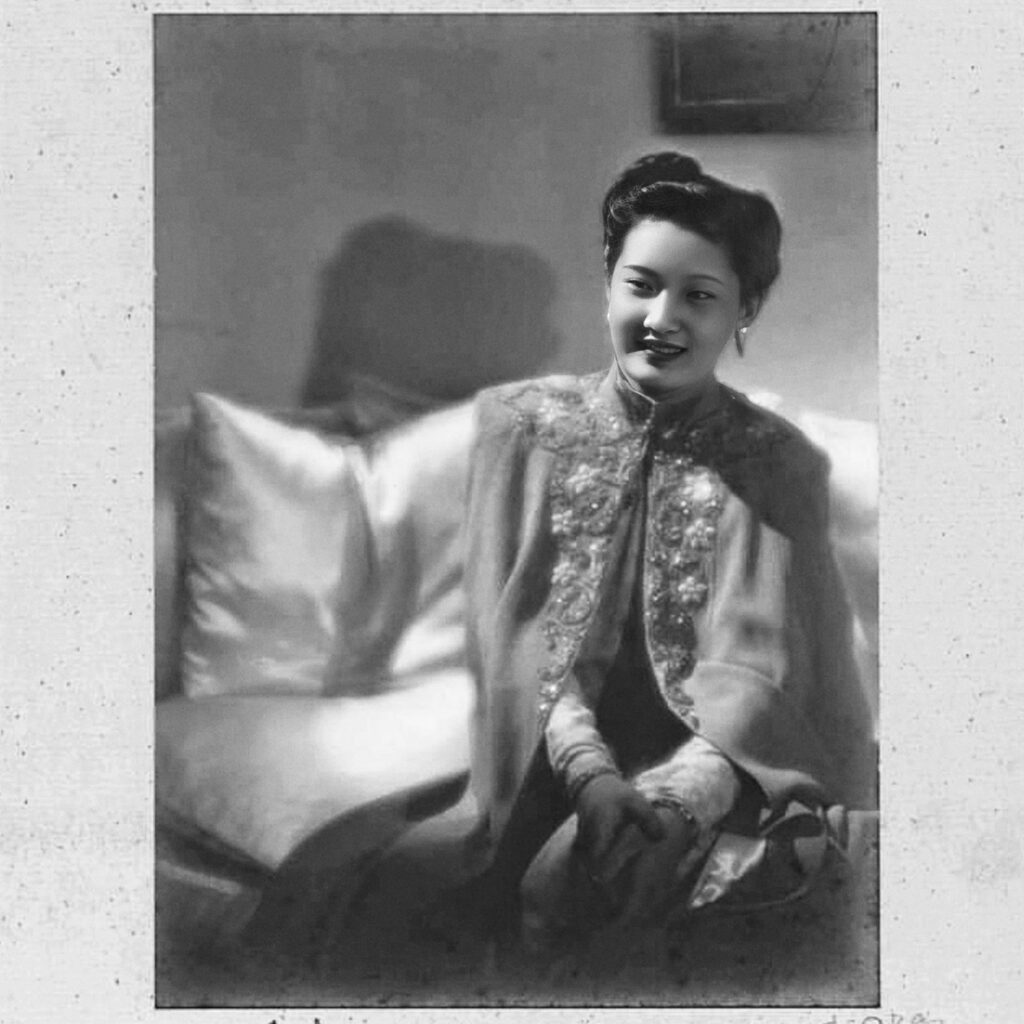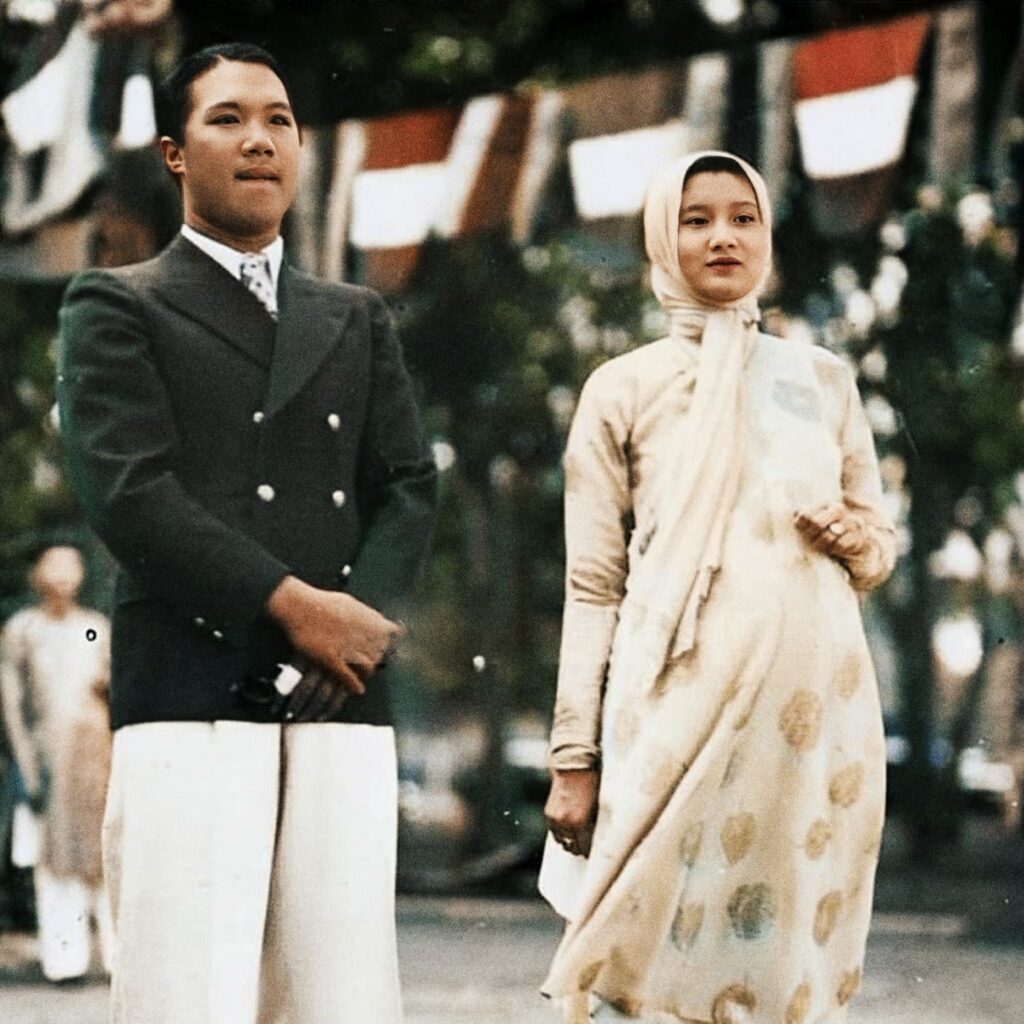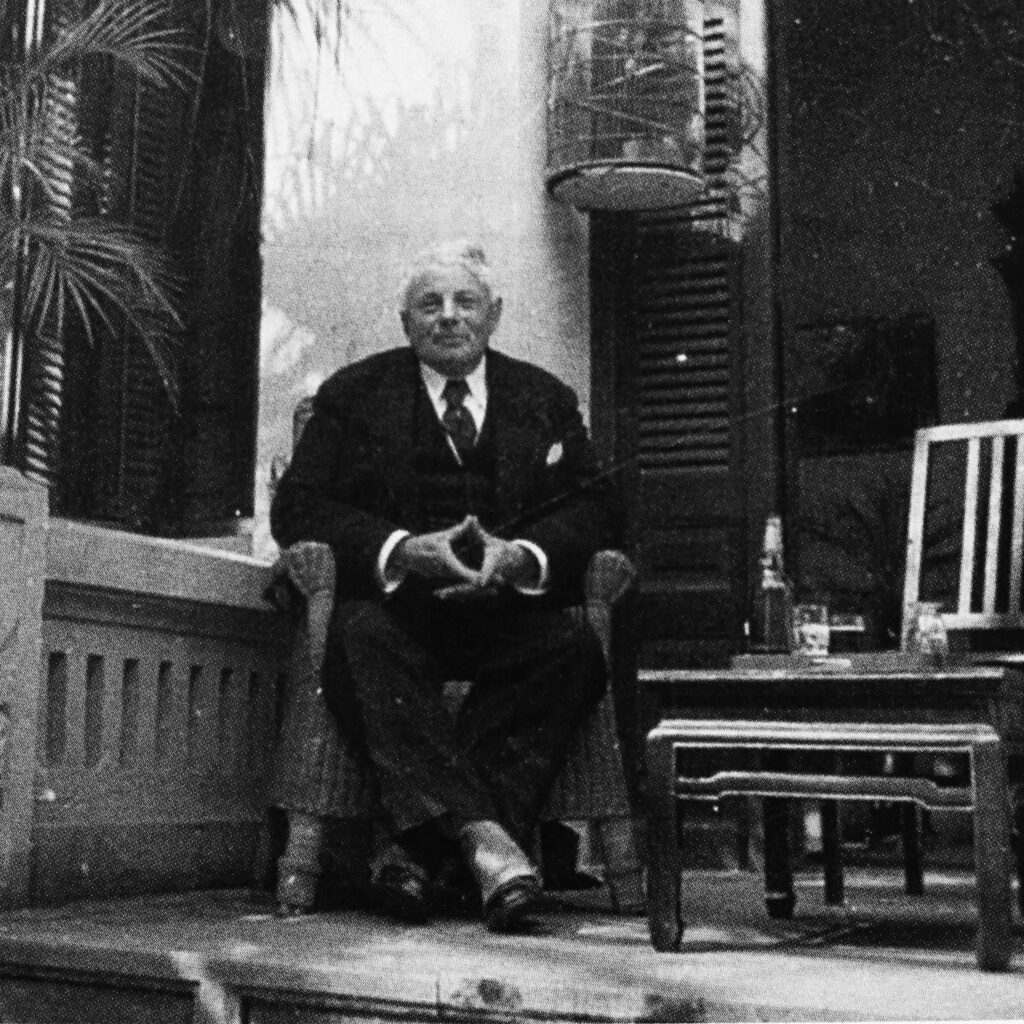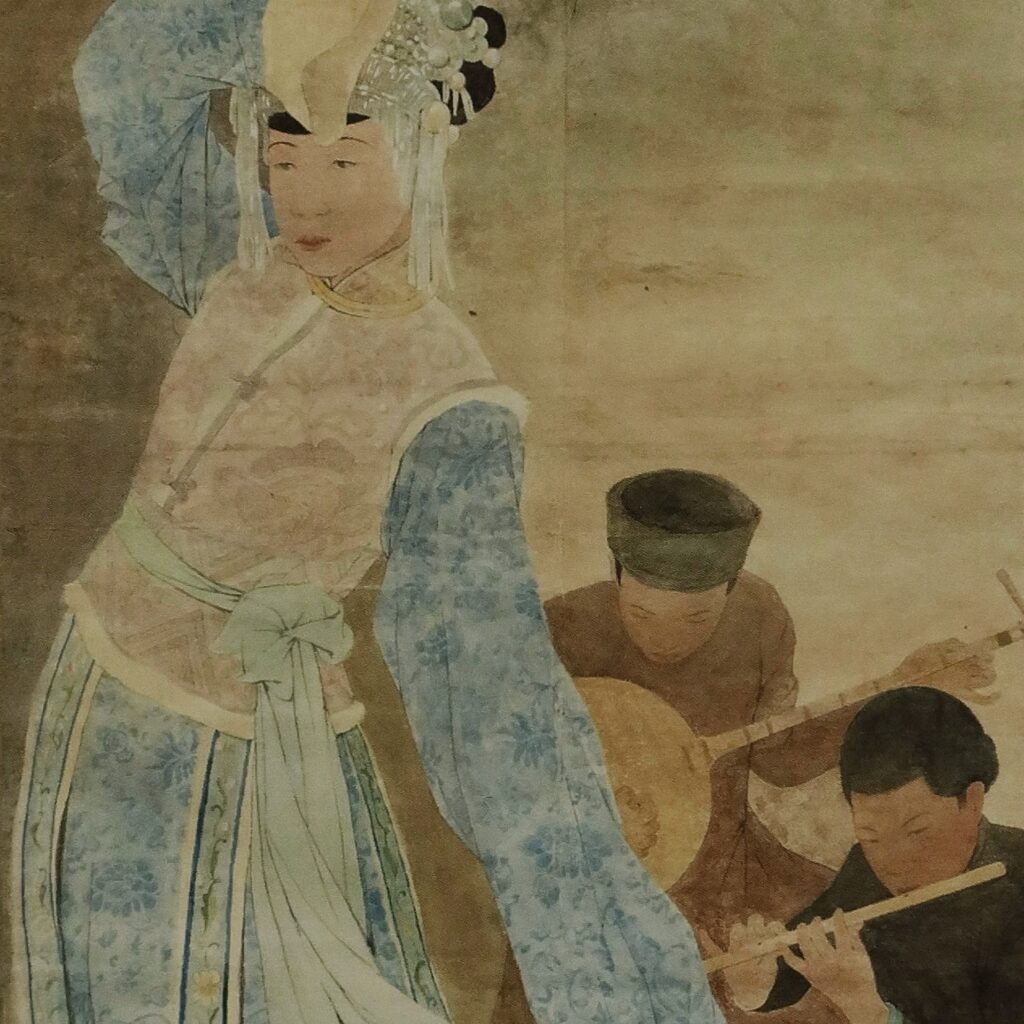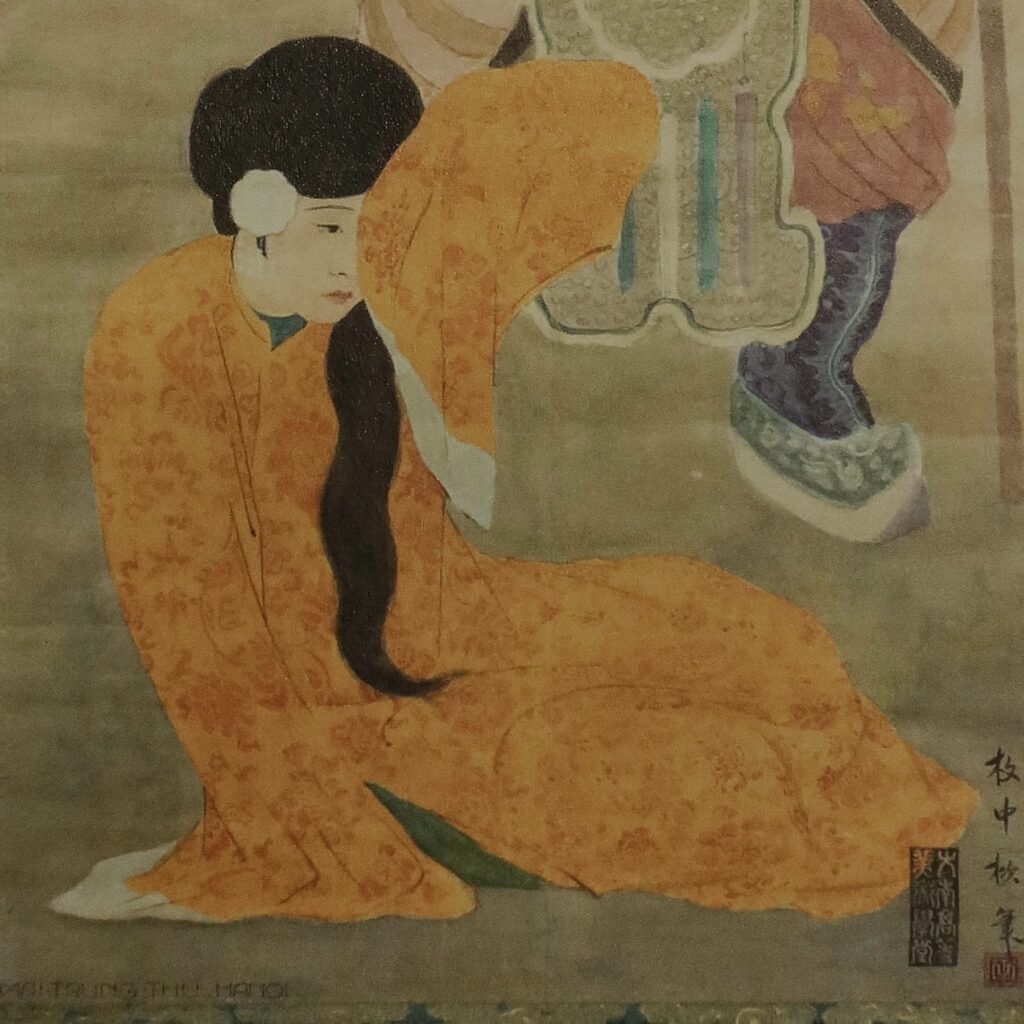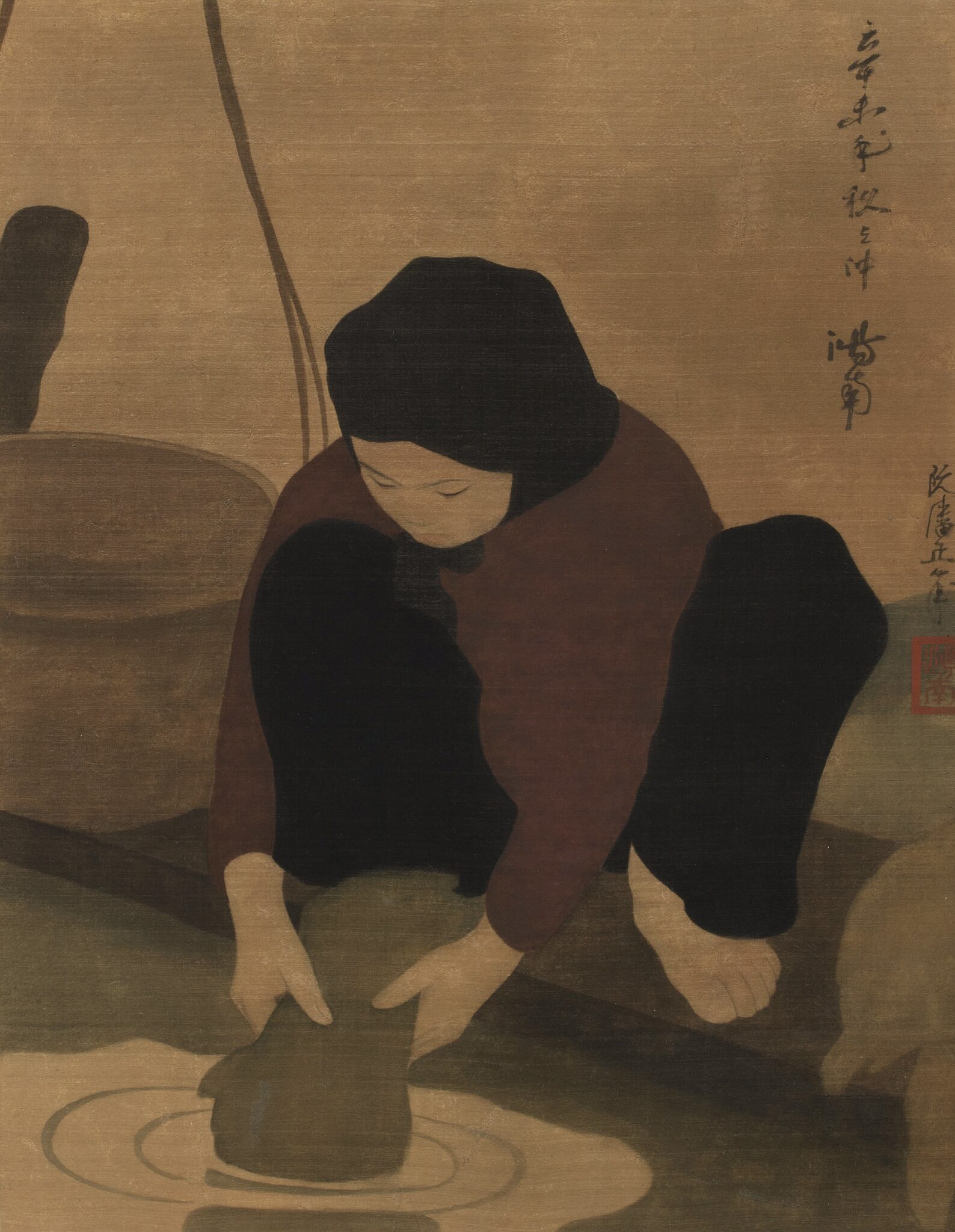
Nguyen Phan Chanh (Vietnam, 1892-1984)
La Laveuse (The Washer)
signed and inscribed in Chinese (middle right)
ink and gouache on silk
64 x 50 cm. (25 1/4 x 19 5/8 in.)
Painted in 1931
Price realised HKD 2,980,000 at Christie's Hong Kong, 24 Nov 2018
Works from Nguyen Phan Chanh’s early oeuvre are extremely rare, and any opportunity to present one is always a special occasion.
In 1931, the Paris Colonial Exhibition presented and offered a grand showcase for Vietnamese paintings. Millions of visitors browsed through the Pavillon de l’Indochine (Indochine Pavilion) and were instantly transfixed by the works on show. The media coverage was extensive, and sharing their interest, the first collectors bought works that made sense to them: Choi O An Quan (Game of o an quan); Len Dong (The Sorcerer); Rua Rau Cau Ao (Washing Vegetables By the Pond); Em Be Cho Chim An (Little girl Feeding the Bird . These works were critically acclaimed and widely published in publications such as L’Illustration and quickly became the cornerstone images of Vietnamese modern painting.
Still in Hanoi, Nguyen Phan Chanh sold the most paintings, and was delighted to hear the news as at the time, only Le Pho had the chance to be in Paris as an assistant to Victor Tardieu. The efforts on the promotion continued after the exhibition - AGINDO (Agency for Development in Indochina) amplified their actions by encouraging a centre to exhibit and sell the quality works from the best artists all issued from the school and, also, in collaboration with different international exhibitions such as Rome (1932) and Naples (1934).
1931 was a year of great importance for Vietnamese painting. There was an all-around beguiling atmosphere of personal ingenuity, group enthusiasm, a search for otherness and for positive confrontation between the Asian world and Western modernity. In this melting pot of idea, men flourished and artists created incredible master-pieces in Vietnamese art.
La Laveuse (The Washer) presented here is included as one of these master-pieces. It is easy enough to be astonished by the perfect use of gouache and ink on silk and laid down on strong paper. A technique and medium he mastered and excelled in, Nguyen Phan Chanh brings to its very best the present lot – by virtue of observing and examining this soft silk work so characteristic of this artist. This perfect technique also
pays homage to the Vietnamese lady, modest and with a sense of humility, leaning over her on-going daily work. The woman is shown on her side which underlines a deep cultural trait in Asia where anonymity is the true identity and humility is an innate quality for a person of
deep-seated values.
Nguyen Phan Chanh is a champion of what we could name the Vietnamese clair-obscur, and some French critics were able to find similarities with Georges de la Tour (1593-1652), around the years Europe was rediscovering his work. In this work, the painter excels in the play of light and shadow based on the subtle use of four tones of brown (the puddle, her clothing, the basket and the background) and wide areas of black ink in the headdress and the pants creating a triangle. Very subtly, like in all his early works, the painter combined these geometrical elements and made them easy to identify. The hemisphere of the water puddle is used to break the triangular unity of the subject. The light background isolates the subject giving it a sense of eternity. The clever combination in the shades of black and brown strengthens the work and transcends the modesty of the subject.
In this fundamental work, Nguyen Phan Chanh expressed a manifesto for future Vietnam: the washerwoman, modest, leaning over her daily work as a message to times to come. 1931 is not indifferent: the previous year the insurrections and nationalistic events of Yen Bay and
the communist of Nghe An, were different in essence but equal in their failure to yet remind us of the important question: what is a nation, who, how and what embodies this?
Presented in its original Gadin frame (named after the Parisian frame-maker), it is dated 1931 Mid Autumn with a stamp by the Artist’s pen name Hong Nam, (Grand South). Nguyen Phan Chanh is also shown to be a perfectionist, judging by the elegant quality of the Chinese inscription and the choice of mounting the painting relatively lowered in the frame.
When Nguyen Phan Chanh painted the present lot, he was 39 years old and had just graduated from the Indochina Fine Art School only a year before, as the eldest of the graduating students from the first class which had studied between 1925-1930. Indeed, in this first class, his fellow students - Le Pho, Mai Trung Thu, Le Van De, and Nguyen Toong Tam were half his age, which set a generational distance between him and them. While many in the younger generation were to find their way to Paris, then the art centre of the world, to carve out artistic careers, Nguyen’s life and art continued to be centered in and around Vietnam, its people and sceneries.
La Laveuse illustrates perfectly the talent of a painter at his best, painting the simple but evocative subjects of commoners engaged in small trades or other equally timeless moments in Vietnamese life. One recalls the lines written in Nguyen Phan Chanh’s diary: “Going out painting at dawn, I usually walked along rivers and canals. Once, I passed by a girl washing vegetables at the water’s edge, her white shirt and black trousers only half-glimpsed in the morning mist. It was dreamlike and really beautiful. And I always like misty, dreamlike and poetic scenes.” Here, if the subject is different, the spirit of the work is the same: these lines perfectly describe the artist’s approach to the painterly subject.
Jean-François Hubert
Senior Expert, Vietnamese Art


